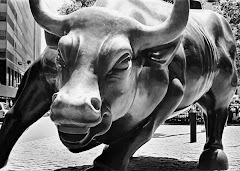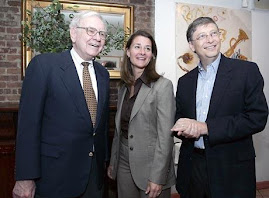Determination Of Bond Price
Before we continue, if you just want to buy bond, you can skip this session. You don’t really need to know how bond price is determined especially if you buy bond fund. The fund manager is paid to get some brain cells killed. But if you like to know more, then this session is important. Everyone knows how the price of a stock is determined – supply and demand. But for bond, it is not by supply and demand. It is purely mathematical. Firstly, for newly issued bonds, every unit will be priced at $1,000. Note that price of bonds are quote based on par value of $100. This is different from equity fund; just accept it. After a bond is issued, the price will change. To know how we determine existing bond’s price, let’s go through the elements that will affect bond price:
- Time (or maturity period)
- Coupon rate
- Future value (par value at redemption)
- Current interest rate or yield
I won’t go through the definition again. If you look at these elements carefully, you will realised that only the yield will change from time to time. The maturity period (or the remaining life), the coupon rate and future value cannot change. Therefore, only yield will change thus directly affecting the price. Or only the price can change and it will directly affect the yield. Their fate is intertwined. With a financial calculator (or using a web-based bond calculator), if you increase the yield, the price will fall and vice versa. This is the inverse relationship between bond price and yield (or current interest rate). Like I say, it is purely mathematical. Play around with the calculation and you will understand.
elements carefully, you will realised that only the yield will change from time to time. The maturity period (or the remaining life), the coupon rate and future value cannot change. Therefore, only yield will change thus directly affecting the price. Or only the price can change and it will directly affect the yield. Their fate is intertwined. With a financial calculator (or using a web-based bond calculator), if you increase the yield, the price will fall and vice versa. This is the inverse relationship between bond price and yield (or current interest rate). Like I say, it is purely mathematical. Play around with the calculation and you will understand.
Inverse Relationship Between Market Interest Rate And Bond Price
You MUST remember this by hard even if you don’t understand - the inverse relationship between bond price and market interest rate. When interest rate goes up, bond price fall; when interest rate comes down, bonds price rise. So if the government (e.g. US’s Fred) increase their interest rate, the banks will follow and existing bond price will drop and vice versa. Again this is purely mathematical. No tricks and not by supply and demand. We can prove this easily with a financial calculator. But even without a calculator, we can also understand it with our common sense. Firstly, when the government announce an increase in interest rate, you wouldn’t buy existing bond, i.e. those that are already issued and available in the open market. Why? This is because the new bonds will be issued with comparatively higher coupon rates following the government’s new interest rate direction. Remember that I say the coupon rate of a bond is fixed? Thus you have no incentive to buy existing bonds with comparatively lower coupon rate. As such, these existing bond prices’ will fall and adjusted immediately such that the yield equals to current interest rate, generally speaking. Thereafter, you are indifferent to whether you should buy the newly issued bonds or existing bonds since they all gives you about the same yield. I repeat again – the YIELD should be your ultimate focus.
“Hey, I am an artist; I have no clue what you are talking about!”
Then forget about the above explanation and just remember the relationship by hard! We are going to use this knowledge to set our investment horizon; our strategy. Please take note that I am not talking about timing the market (buy in December and sell in January) but setting investment horizon. Let's say the economy just recovers from recession, interest rates are generally low. In the process of recovery to full-blown bull market, the government will increase the interest rate gradually. Imagine you bought a 10-year bond before economic recovery, say in 2003 and your initial intention was to hold it until maturity. Then you witnessed strong economic recovery and a few interest rate hikes. And everyone is making tonnes of money from equity. You gave up and decided to sell your bond before its maturity but you need to sell at a capital loss.
Let’s see how much you have learnt. My first one million dollar question:
Q. When is the best time to buy bond?
A. …….. Don’t know.
At the peak of a business cycle! The economy is bullish and interest rate is high. Everyone knows that what goes up must come down. It’s a matter of time. So if you believe that the bull run is over and recession may start in 2008, now is the best time to get out of equity and switch to bonds. When global economy really goes into recession for next few years, interest rate will fall. Governments will cut rates to boost business investment. And what happen when interest rate fall? Your bond price will goes up and you have two easy options:
1) Continue to hold and earn your higher coupon.
2) Sell it in the market for capital gain.
To formulate strategy, understanding this relationship is very important. If you don’t understand then remember by hard.
In The Event Of Default
I mentioned previously that the borrower must deliver its promise “without fail”. Although the borrower guarantees to pay you back on maturity date, it does not mean that Bonds are risk-free. What if the company fold up along the way? If you really want to play safe, you can lend to the government instead. Since the corporate bonds (or commonly known as debentures) carries a higher risk compare to the government bonds (on apple-to-apple basis), its coupon rate tends to be higher, all else remains constant. Let me illustrate this with an excerpt from an article “Corporate bonds risky on two counts” in Business Times during recent recession.
“SOME investors have been tempted into investment-grade corporate bonds this year because yields have been relatively attractive compared to money market returns. But events in the past few months have illustrated the risk of these investments. US and European bank and corporate bonds have been downgraded. Ford Motor's benchmark bond, which has been regarded as investment grade, is another example of the risks involved. Just over a week ago, Ford's ten-year bond maturing in 2011 was priced on a yield of 9.25 per cent. This was a spread of 565 basis points, or 5.65 percentage points, above 10-year US Treasury bonds, which were yielding 3.6 per cent. Such a spread is generally allocated to high-risk bonds. "
Business Times - 21 Oct 2002
Archived Hock Lock
Before we continue, if you just want to buy bond, you can skip this session. You don’t really need to know how bond price is determined especially if you buy bond fund. The fund manager is paid to get some brain cells killed. But if you like to know more, then this session is important. Everyone knows how the price of a stock is determined – supply and demand. But for bond, it is not by supply and demand. It is purely mathematical. Firstly, for newly issued bonds, every unit will be priced at $1,000. Note that price of bonds are quote based on par value of $100. This is different from equity fund; just accept it. After a bond is issued, the price will change. To know how we determine existing bond’s price, let’s go through the elements that will affect bond price:
- Time (or maturity period)
- Coupon rate
- Future value (par value at redemption)
- Current interest rate or yield
I won’t go through the definition again. If you look at these
 elements carefully, you will realised that only the yield will change from time to time. The maturity period (or the remaining life), the coupon rate and future value cannot change. Therefore, only yield will change thus directly affecting the price. Or only the price can change and it will directly affect the yield. Their fate is intertwined. With a financial calculator (or using a web-based bond calculator), if you increase the yield, the price will fall and vice versa. This is the inverse relationship between bond price and yield (or current interest rate). Like I say, it is purely mathematical. Play around with the calculation and you will understand.
elements carefully, you will realised that only the yield will change from time to time. The maturity period (or the remaining life), the coupon rate and future value cannot change. Therefore, only yield will change thus directly affecting the price. Or only the price can change and it will directly affect the yield. Their fate is intertwined. With a financial calculator (or using a web-based bond calculator), if you increase the yield, the price will fall and vice versa. This is the inverse relationship between bond price and yield (or current interest rate). Like I say, it is purely mathematical. Play around with the calculation and you will understand.Inverse Relationship Between Market Interest Rate And Bond Price
You MUST remember this by hard even if you don’t understand - the inverse relationship between bond price and market interest rate. When interest rate goes up, bond price fall; when interest rate comes down, bonds price rise. So if the government (e.g. US’s Fred) increase their interest rate, the banks will follow and existing bond price will drop and vice versa. Again this is purely mathematical. No tricks and not by supply and demand. We can prove this easily with a financial calculator. But even without a calculator, we can also understand it with our common sense. Firstly, when the government announce an increase in interest rate, you wouldn’t buy existing bond, i.e. those that are already issued and available in the open market. Why? This is because the new bonds will be issued with comparatively higher coupon rates following the government’s new interest rate direction. Remember that I say the coupon rate of a bond is fixed? Thus you have no incentive to buy existing bonds with comparatively lower coupon rate. As such, these existing bond prices’ will fall and adjusted immediately such that the yield equals to current interest rate, generally speaking. Thereafter, you are indifferent to whether you should buy the newly issued bonds or existing bonds since they all gives you about the same yield. I repeat again – the YIELD should be your ultimate focus.
“Hey, I am an artist; I have no clue what you are talking about!”
Then forget about the above explanation and just remember the relationship by hard! We are going to use this knowledge to set our investment horizon; our strategy. Please take note that I am not talking about timing the market (buy in December and sell in January) but setting investment horizon. Let's say the economy just recovers from recession, interest rates are generally low. In the process of recovery to full-blown bull market, the government will increase the interest rate gradually. Imagine you bought a 10-year bond before economic recovery, say in 2003 and your initial intention was to hold it until maturity. Then you witnessed strong economic recovery and a few interest rate hikes. And everyone is making tonnes of money from equity. You gave up and decided to sell your bond before its maturity but you need to sell at a capital loss.
Let’s see how much you have learnt. My first one million dollar question:
Q. When is the best time to buy bond?
A. …….. Don’t know.
At the peak of a business cycle! The economy is bullish and interest rate is high. Everyone knows that what goes up must come down. It’s a matter of time. So if you believe that the bull run is over and recession may start in 2008, now is the best time to get out of equity and switch to bonds. When global economy really goes into recession for next few years, interest rate will fall. Governments will cut rates to boost business investment. And what happen when interest rate fall? Your bond price will goes up and you have two easy options:
1) Continue to hold and earn your higher coupon.
2) Sell it in the market for capital gain.
To formulate strategy, understanding this relationship is very important. If you don’t understand then remember by hard.
In The Event Of Default
I mentioned previously that the borrower must deliver its promise “without fail”. Although the borrower guarantees to pay you back on maturity date, it does not mean that Bonds are risk-free. What if the company fold up along the way? If you really want to play safe, you can lend to the government instead. Since the corporate bonds (or commonly known as debentures) carries a higher risk compare to the government bonds (on apple-to-apple basis), its coupon rate tends to be higher, all else remains constant. Let me illustrate this with an excerpt from an article “Corporate bonds risky on two counts” in Business Times during recent recession.
“SOME investors have been tempted into investment-grade corporate bonds this year because yields have been relatively attractive compared to money market returns. But events in the past few months have illustrated the risk of these investments. US and European bank and corporate bonds have been downgraded. Ford Motor's benchmark bond, which has been regarded as investment grade, is another example of the risks involved. Just over a week ago, Ford's ten-year bond maturing in 2011 was priced on a yield of 9.25 per cent. This was a spread of 565 basis points, or 5.65 percentage points, above 10-year US Treasury bonds, which were yielding 3.6 per cent. Such a spread is generally allocated to high-risk bonds. "
Business Times - 21 Oct 2002
Archived Hock Lock
To be continue…..



